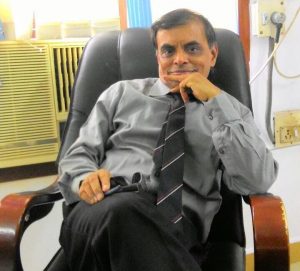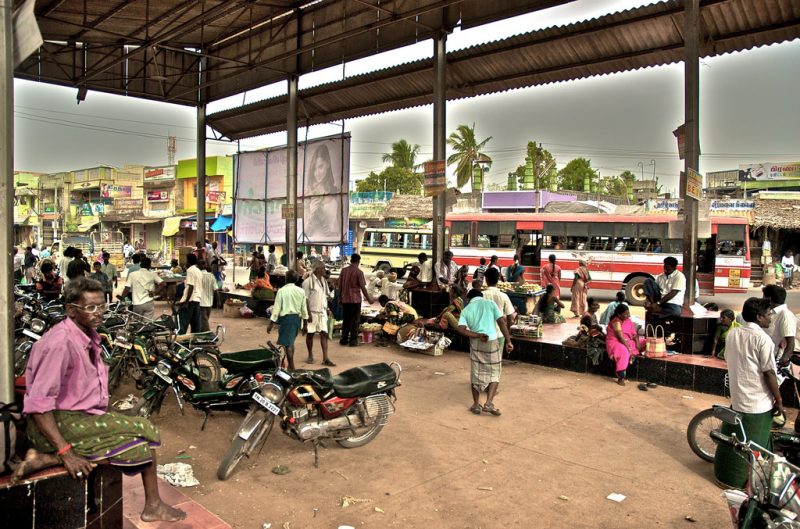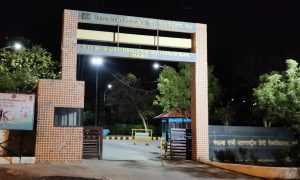India and the World : The internal issue of Tamils.

Baskaran Krishnamurthy
Sri Lankan Tamils’ issue came to the fore in the year 1979. The Tamils strongly felt that they were being discriminated against by the majority Sinhalese. Two young Tamils – Nadarajah Thangadurai and Selvarajah Yogachandran alias Kuttimani – launched an organization to fight for the ‘liberation’ and to form a separate State for Tamils by name ‘Eelam’.
Though it was said to be advocating an armed struggle to achieve ‘Eelam’, it did not really have so much of an armed unit or an organized set-up to seriously pursue its goal of attaining ‘liberation’ by force. It was more like an aspiration or an ‘ambition’ at the most to unite the Tamils against the oppressive policies of the Sinhalese Government.
On 5th April 1981, ‘Kutti’ was arrested on charges of criminal acts. It was a falsely implicated one to somehow dismantle the coming together of the Tamils at the budding stage. The government mustered all its powers to ‘build’ a case for itself, creating all possible ‘evidences’ to prove the involvement of ‘Kutti’ in gravest crimes.
As was planned by the Sinhalese government, the court found Kutti guilty and pronounced death sentence to him. It was nothing but an open threat by the Sinhalese Government and was a blatant attempt to silence the legitimate voice of Tamils.
In the year 1983, an ‘anti Tamil pogrom’ was allowed to grow into a violent mutiny by a handful of Sinhala anti-nationals to ‘pay back’ to the agitating Tamils. The program was perpetrated and sponsored by the Sinhalese government to liquidate the Tamil organizations.
On 25 July 1983, a violent mob attacked the ‘most secured’ Welikada prison killing the inmates indiscriminately. The attackers were none other than Sinhalese ‘soldiers’ and policemen and they had all the weapons to wipe out the ‘enemies’ without a fight. Why should they ‘choose’ Welikada prison? The liberation leaders – Selvarajah Yogachandran (Kuttimani) and Nadarajah Thangadurai – were kept in that prison. The ‘plot’ was carried out with the connivance of the men in power. The leaders were tortured and killed in the most gruesome manner.
The way in which Kuttimani was killed remains heart breaking even today. Amnesty International reported that his eyes were mutilated and gouged out with iron bars since he said that after his death, his eyes should be donated and fixed to someone else so that he would see a Free Tamil Eelam even after he was dead. His tongue was cut out too and his body was disposed of in front of a statue of Buddha in the prison yard. (from unconfirmed source)
The rampage took a heavy toll with many hundreds of Tamil youth being targeted and murdered. It all happened in broad day light in the presence of helpless onlookers. The carnage went on unabated for 3 days making it one of the most barbaric, unprovoked assault of the government on its own citizens.
Sri Lankan authorities have not been held to any responsibility till date for this barbaric act of vengeance. If at all there has to be case for a separate Tamil Eelam, this one incident of the majority Sinhalese is enough. International agencies have miserably failed in their duty in delivering justice to the Tamils who lost their young leaders to the hooliganism of the Sinhalese.
The brutal liquidation of the Tamil leaders did not help the cause of the Sinhalese forces in thwarting the moves for a Tamil Eelam. Rather, it gave birth to a number of organizations with more or less similar motives and similar methodologies too. Chief among them are:
- EFDP – Eelam People’s Democratic Party led by Douglas Devanandha;
- TELO – Tamil Eelam Liberation Organization led by Sri Sabarathnam.
- PLOTE – People’s Liberation Organization of Tamil Eelam led by Paranthan Rajan.
- ENDLF – Eelam National Democratic Liberation Front.
- EROS – Eelam Revolutionary Organization on of Students led by V Balakumar
- EPRLF – Eelam People’s Revolutionary Liberation Front led by K. Padmanabha and…
- LTTE – Liberation Tigers of Tamil Eelam of Velupillai Prabhakaran.
There were frequent infightings among the Tamil units themselves to gain supremacy over the other and the leaders of almost all groups were killed by the most powerful one among them leaving just one organization in the field to take on the Sri Lankan forces. Though an ‘umbrella organization’ by name ENLF – Eelam National Liberation Front was indeed attempted, it did not bring the desired result of a unified struggle by all Tamils against the Sinhalese.
This ‘changed’ situation had both advantages and adversities. It became easier to orchestrate the fights against the Sinhalese whereas it also substantially reduced the combined strength of Tamils and weakened the combative spirit as well. The ultimate defeat in the ‘war’ at the final stages could be, to a large extent, attributed to these ‘inside’ tussle. Had there been unity and better coordination among the Tamil organizations, perhaps, the struggle for Tamil Eelam might have seen a very different result; might have reached its logical end.
The rise and dominance of LTTE as the only major Tamil group to fight for their rights changed the entire scenario of the Liberation movement into a direct confrontation between the Government and a militant outfit. Or at least this is what the Sinhalese politicians tried to project the whole issue before the international community. They were largely successful too in their mission. This development sealed any prospect of emergence of a separate Eelam as was the dream of may Tamils all over the world.
A number of attempts were made by India to bring the warring parties into an acceptable formula of a united nation with the rights of Tamils firmly established as equal citizens of the Land – at par with their Sinhalese brethren. The flickering approach of the Sri Lankan government and the fluctuating attitude of the Tamil organization kept a mutually beneficial agreement evading whenever a consensus was to evolve.
The involvement of India in the Tamils’ fights for their legitimate rights what is still regarded officially as the internal issue of Sri Lanka reflected the predicament and uneasiness of the Union Government. This should be seen from the point of view of our universally acclaimed policy of international affairs – that of non-interference in the internal affairs and respecting the sovereignty of another country.
In spite of a committed resolution of non-interference, India did try to play a healthy and constructive role in restoring normalcy in Sri Lanka and to ensure that the Tamils were able to secure all the rights that were possible within the scope of the Sri Lankan laws.
In the year 1987, in order to regain control over the Tamils’ area, the Sri Lankan imposed economic blockade on the Northern parts of its country and also resorted to military attacks on the members of the Tamil Organizations. There naturally was a huge uproar in Tamil Nadu, India against this move of the Sinhalese government. India was in a way forced to make its entry into the Civil War of Sri Lanka – to protect the rights and interests of the Tamils.
At the initiative and with an active role of the Indian Government, Sri Lanka agreed to bring about the ‘13th Amendment’ to its Constitution which facilitated ‘regional autonomy’ to the Tamil districts of northern Sri Lanka. This was perhaps the best that could be done within the federal set-up of Sri Lanka without in any way affecting the sovereignty of the country.
Many of the Tamil groups did understand the ground reality and realized that that was the culminating point to call truce and work for a ‘working’ relationship with their government in Sri Lanka. Under the arrangement, the ‘militant’ outfits of Tamils had to surrender their ‘weapons’ and return to peaceful negotiations. This condition was unacceptable to LTTE and so refused to lay down the arms. It is being alleged that the LTTE opposed against the proposal because it nominated a member of EPRLF as the Chief Executive Officer of the northern region which had the eastern part merged with it too.
Indian government sent its Unit to ensure peace in the region more with the motive to convince the LTTE to accept the peace formula in the best interests of Tamils, for their well being and for a long lasting peace and harmony.
Opposing the move of the Indian Government, the LTTE chose to fight against the IPKF – India Peace Keeping Force – that resulted in hundreds of Indian soldiers being killed. This was the worst turn of events that was never visualized by none of the parties involved in the issue – neither the Indian government, nor the innocent Tamils leave alone the Sinhalese government.
Ironically, the decision to send a Peace Keeping Force to the northern Sri Lankan region was opposed by the Sinhalese as well. They regarded the direct involvement of India as an intrusion. Thus the Indian initiative was to be the most unpopular move that failed to have the approval of either the Tamils or the Sinhalese.
In the mean time in India in 1991, Lok Sabha elections were ordered and on May 21, during the election campaign in Tamil Nadu, the Prime Minister prospect and the former Prime Minister Rajiv Gandhi was assassinated by a ‘human bomb’. This led to a serious misunderstanding between the Indian Government and the militant LTTE. The involvement of LTTE in the assassination of a popular Indian leader on the Indian soil drove the Indian government to declare LTTE to be an extremist organization and was hence declared a banned outfit.
Owing to its unpopularity, IPKF was withdrawn from the northern districts of Sri Lanka leaving the field wide open for ‘one-to-one’ fight between the Sri Lankan forces and the LTTE.
In May 2009, the Sri Lankan army waged an all out battle against the LTTE fighters that ended in the liquidation of the militant forces and regaining full control of the province by the Sinhalese authorities.
During the peak of the ‘war’, many thousand Tamils in fear and helplessness, fled their country, crossed over to India and ended up refugees in the coastal districts of Tamil Nadu.
The handling of the Tamils issue by the Indian government is being questioned by many in Tamil Nadu who have a strong case too. Since it involves too much of political sensitivity, we do not go deep into the cries and shouts of these ‘leaders’ whose voices may not represent the real expectations of the Tamils in Sri Lanka.
This write-up is NOT intended to be judgmental though it appears to be one as such. It would be prudent to meticulously go through the statements, arguments, explanations, demand, declarations and announcements of various Tamil units that are being regularly updated on their networking sites.
Tibet and ‘Eelam’ are two provinces that have all the legitimate ‘qualifications’ to be ‘on their own’. Yet, owing to poor handling of the affairs by various parties involved in it, the ‘liberation’ seems to have been completely erased for now.
The International community does have so much to explain to the Tamils of Sri Lanka for having been mute all along to the plight of the suffering Tamils and for the denial of their legitimate rights in their Land. And… ‘International community’ does include India too. Isnt’it?
Let us move on to China!




























 WhatsApp us
WhatsApp us
Pingback: ignou report
Pingback: Coolsculpting
Pingback: What is regression testing
Pingback: DevOps as a service
Pingback: Functional testing approach
Pingback: replica watches china free shipping
Pingback: fake rolex
Pingback: sell car
Pingback: Digital transformation consultants
Pingback: www.swissreplicas.me
Pingback: dumps + pin site
Pingback: historie med cbd og
Pingback: psilocybin mushrooms for sale
Pingback: nova88
Pingback: sbobet
Pingback: sbobet
Pingback: psilocybe cubensis spores legally,
Pingback: Text Inmate
Pingback: anti screenshot
Pingback: buy fresh dumps
Pingback: Plus d'informations
Pingback: Georgia cornhole
Pingback: his response
Pingback: buy medicated mushrooms chocolates bars.
Pingback: Where to buy DMT Perth
Pingback: furbabiescustomportraits
Pingback: zweefparasol met voet
Pingback: 뉴토끼
Pingback: https://www.heraldnet.com/reviews/phenq-reviews-is-it-legit-update/
Pingback: buy psilocybin mushrooms united states
Pingback: this post
Pingback: สล็อตเว็บตรง
Pingback: blote tieten